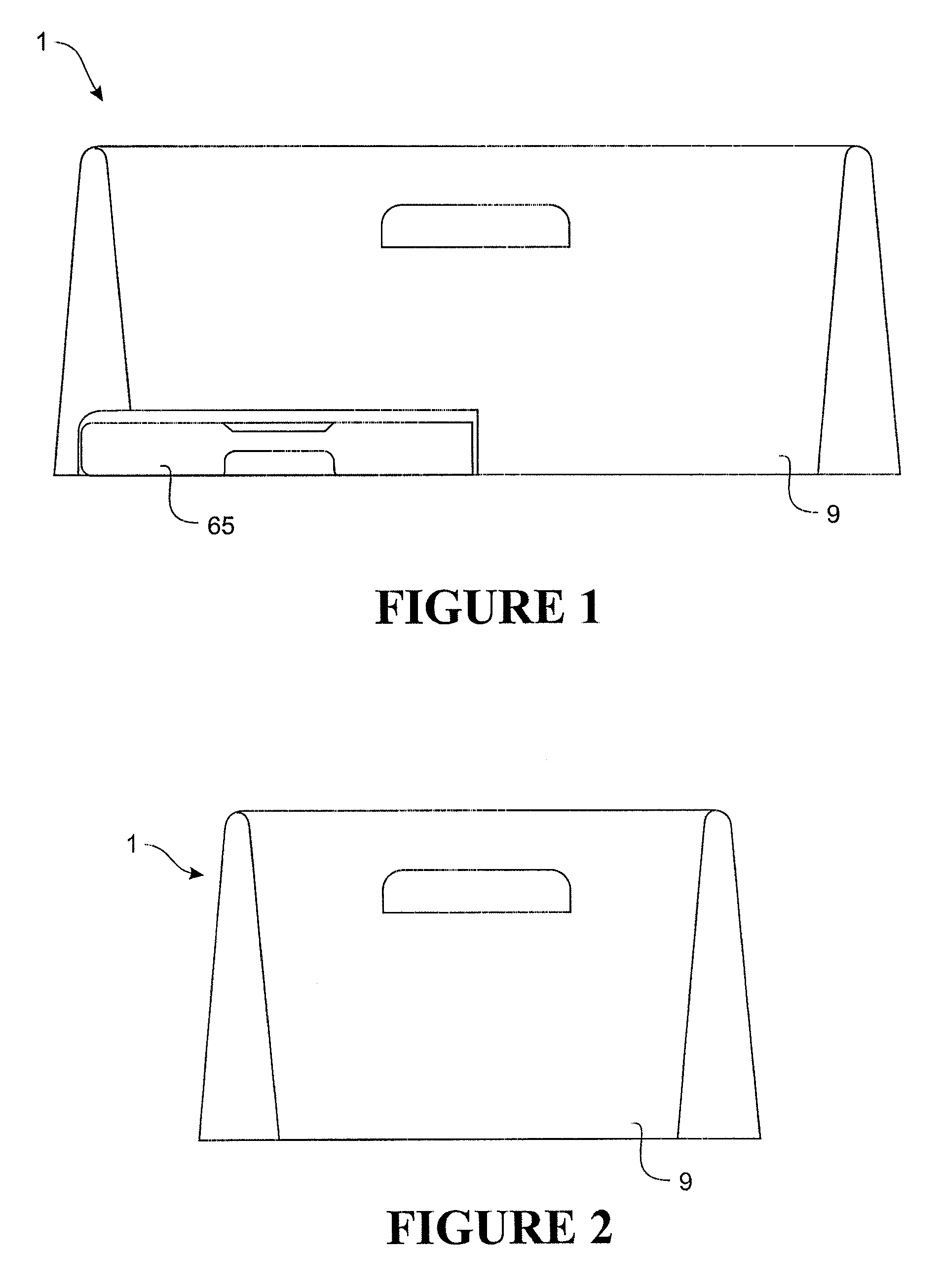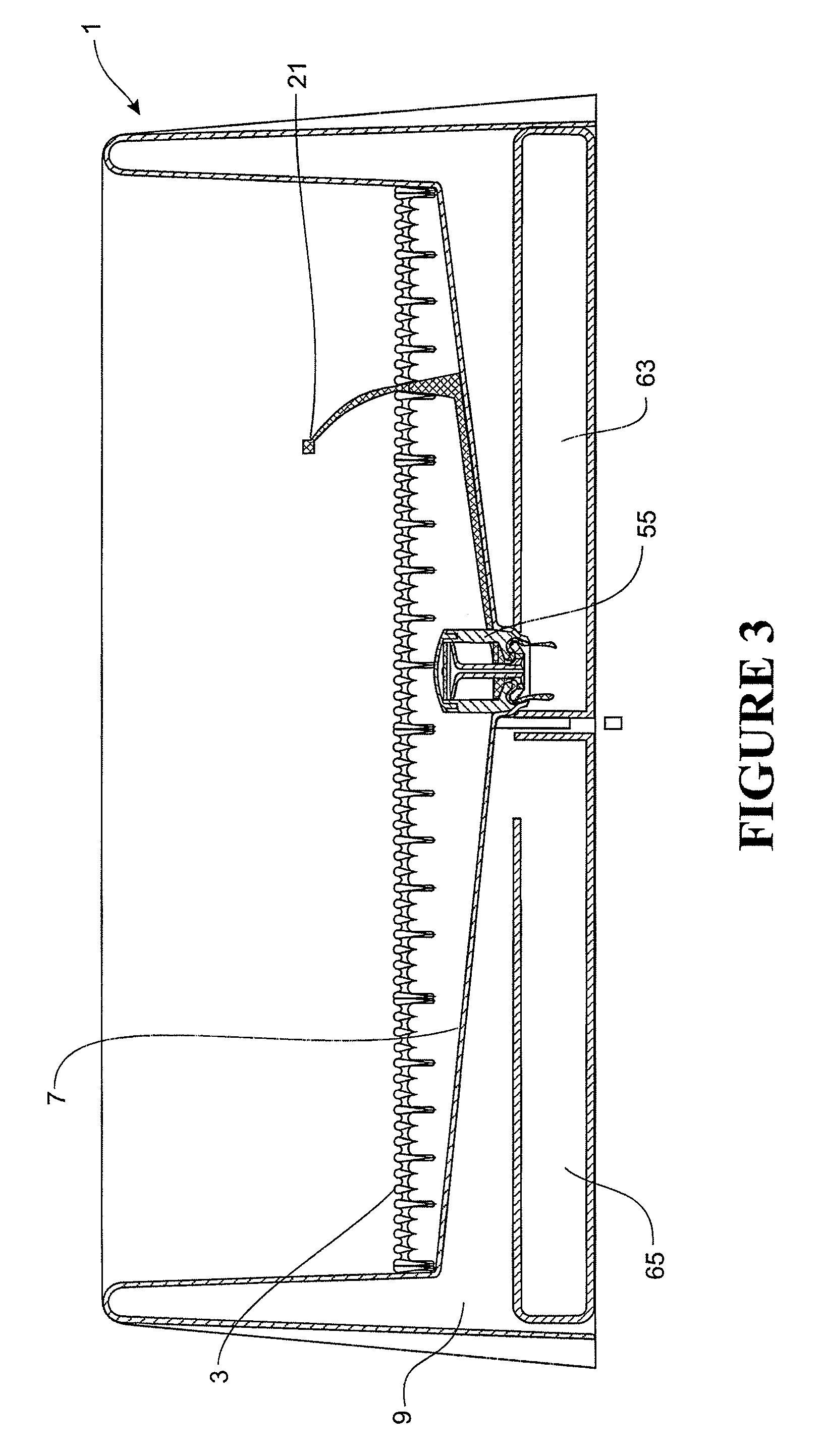Toileting Device for a Domestic Animal
a technology for domestic animals and toilets, applied in the field of toilets for domestic animals, can solve the problems of ongoing cost of replacing materials as they are used, possible hygiene problems, and assembly and disassembly
- Summary
- Abstract
- Description
- Claims
- Application Information
AI Technical Summary
Problems solved by technology
Method used
Image
Examples
first embodiment
[0076] The upper plug of the first embodiment is circular when viewed from above. The upper plug has tapered sides 49 which are adapted to be received in the aperture formed in the upper tray. Four diametrically opposed removal lugs 51 are spaced around the perimeter of the plug.
[0077]FIGS. 17 and 18 show a second embodiment of the s-type drain 55. The second embodiment is similar to the first embodiment, expect that it has a filter and an air vent or outlet 57. The air vent prevents gas or odour building up in the tray. The air vent is provided with a filter 59, such as a carbon filter, and a filter cap 61. The filter removes odour from the air as it passes from the vent into the immediate environment. Other conventional filter materials may be used.
[0078] The drain passage allows liquid waste to pass through the channel into the groove and flow over the rim, into the lower tray or an inner tray. FIG. 15 shows a detail view of the first embodiment of the s-type drain installed in ...
second embodiment
[0087] the textured surface, indicated generally by reference numeral 101, is shown in FIGS. 23 to 30. The textured surface of this embodiment has a cover 102 and a draining surface 103.
[0088] Referring to FIG. 23, the draining surface 103 is formed as a generally rectangular plate. The draining surface has a honeycomb or grid structure formed from a plurality of projections 105 that are separated by a plurality of apertures 106. The projections are spaced evenly along its width and length in rows and columns. A number of elongate ribs 107 extend across the width of the drainage surface, connecting adjacent rows of projections. The projections are connected within the row by webs 108.
[0089] In plan view, each projection 105 has a teardrop shape with a wide, rounded end 109 and a narrower, pointed end 111. The orientation of the projections alternate along each row. The rounded end 109 of one projection faces the rounded end 109 of a projection on one side and the pointed end 111 fa...
PUM
 Login to View More
Login to View More Abstract
Description
Claims
Application Information
 Login to View More
Login to View More - R&D
- Intellectual Property
- Life Sciences
- Materials
- Tech Scout
- Unparalleled Data Quality
- Higher Quality Content
- 60% Fewer Hallucinations
Browse by: Latest US Patents, China's latest patents, Technical Efficacy Thesaurus, Application Domain, Technology Topic, Popular Technical Reports.
© 2025 PatSnap. All rights reserved.Legal|Privacy policy|Modern Slavery Act Transparency Statement|Sitemap|About US| Contact US: help@patsnap.com



